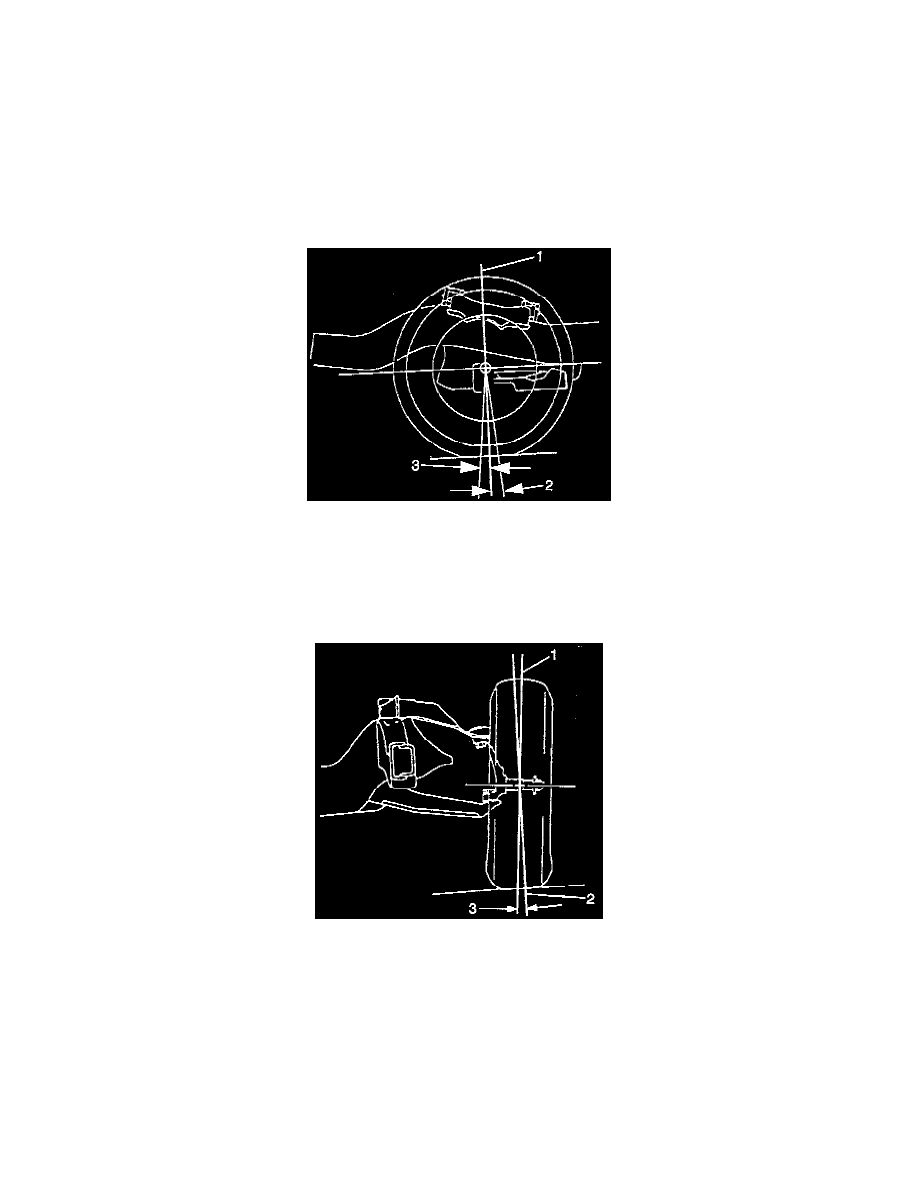Express 1/2 Ton Van V8-305 5.0L VIN M SFI (1998)

Alignment: Description and Operation
General Description
The front wheel alignment refers to the angular relationship between the front wheels, the front suspension attaching parts and the ground. Maintaining
the proper front wheel alignment will provide efficient directional stability in order to prevent abnormal tire wear. The most important factor of front
wheel alignment is the wheel toe, the wheel camber and the wheel caster angles.
The wheel vibrations are rarely the result of improper alignment.
Caster Description
The caster is the tilting of the steering ball joint axis either forward or backward from the vertical (1) when viewed from the side of the vehicle. A
backward tilt (3), from the top of the vehicle, is a positive degree of caster and a forward tilt (2) is a negative degree of caster. The caster influences
directional control of the steering but does not contribute to the tire wear. If one wheel has more positive caster than the other, it will cause that wheel to
pull toward the center of the vehicle. This condition will cause the vehicles to lead toward the side with the fewest degrees of positive caster.
Camber Description
The camber is the inward or outward tilting of the front wheel from the vertical (1) when viewed from the front of the vehicle. When the wheels tilt
outward at the top, the camber is positive (3). When the wheels tilt inward at the top, the camber is negative (2). The camber influences both the
directional control and the tire wear and will also cause a vehicle to pull or lead to one side (whichever wheel has the most positive camber).
Toe Description
